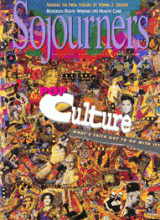Saul Alinsky used to laugh about community organizers engaged in ad hoc demonstrations who would run to a convenient alley and frantically flip through their books trying to find what to do next. Peter Ackerman and Christopher Kruegler’s Strategic Nonviolent Conflict is the book to use when it comes to strategizing about nonviolence, but it can scarcely be consulted on the run! Yet it is intensely practical.
In unnecessarily dry opening chapters, the authors lay out a new kind of "12-step" program that provides 12 criteria for judging the success or failure of nonviolent struggles. The genius of the book is that groups planning nonviolent actions can reflect on these criteria in advance, anticipating countermoves by opponents, developing clear fallback strategies for use when the primary strategy bogs down, fails, or encounters overwhelming resistance.
The excitement of the book surfaces in six case studies that provide grist for testing the 12 criteria. Readers may object to the treatment of Gandhi; they may be puzzled at the authors’ decision to limit the evaluation to actual campaigns without reference to their later outcomes; they may bridle at the deliberate exclusion of religious motivation and philosophy as ingredients in nonviolent struggles. But one can only be grateful for this immensely valuable contribution to both the theory and practice of nonviolence.
Strategic Nonviolent Conflict: The Dynamics of People Power in the Twentieth Century. By Peter Ackerman and Christopher Kruegler. Praeger, 1994.
WALTER WINK teaches at Auburn Theological Seminary in New York City and is the author, most recently, of Engaging the Powers (Augsburg Fortress, 1993).
Read the Full Article
